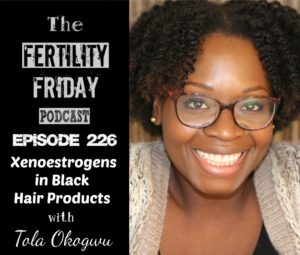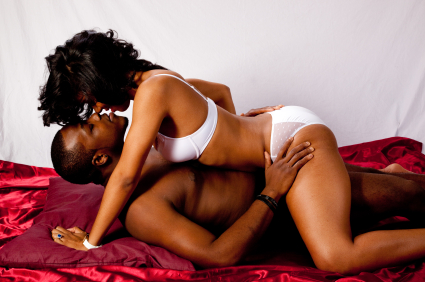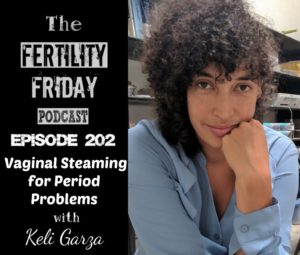This week SuzyKnew! shares one of Fertility Friday’s popular blog post and podcasts on menstrual cups by Lisa Henderson-Jack.

Have you ever used a menstrual cup? Let me tell you, they are amazing! So freeing. There were so many things that I loved about menstrual cups right off the bat. I fell in love with the idea of using a product that was made for women by women, I loved using a something that collected my period, instead of absorbing it, and I also felt that I was being rebellious somehow by not participating in the “sanitary napkins” shopping experience at my local drug store anymore. I would walk past the “feminine hygiene” aisle in the store and quietly laugh to myself thinking — HA! I don’t need you anymore, or something to that effect.
One of the huge benefits that I immediately saw after I started using menstrual cups was the cost savings. Instead of spending money every single month on menstrual products I spent my money one time and had a product that was not only more comfortable to use and more effective at collecting my period blood, but since it was a reusable product I was immediately able to make a positive environmental impact by reducing the waste that I was putting out into the world.
Even though I could write a 5,000 word ode to menstrual cups because, don’t get me wrong, I LOVE menstrual cups, and I’ve been using them for going on 15 years now, there are a few things that you need to know if you’re thinking about using them and haven’t tried them yet. If you’ve been using menstrual cups for some time now you’ll be able to relate to many of the experiences that I’ve had and I’d love to hear yours!
So here goes….the 7 things no one tells you about using menstrual cups:
1. At first glance they look kind of…BIG – Um yeah. When you get your brand new menstrual cup and take it out of the package for the first time it looks pretty big. This is definitely a subjective measure, and perhaps your experience was different, but I need to call a spade a spade here. Menstrual cups are at least 2-3 times wider than tampons. Even the super duper “torpedo tampons” (as I used to lovingly call them as a teenager). I’m pretty sure you could stuff at least 3 tampons inside an average sized menstrual cup. My first thought was — where the heck is that supposed to go?
2. There is a steep learning curve – If you thought you were going to buy a menstrual cup and your first experience using it was going to be super easy and wonderful prepare to be disappointed. Don’t get me wrong, you’ll eventually have that amazing experience with the birds singing and the amazement from using such an effective and comfortable product, but it doesn’t start out that way.
You’ll likely have at least one day where you feel the cup poking out of you all day if it slips down too far, especially if you’re still figuring out just how far up it really has to go. Once you’ve gotten the hang of how to insert it properly, you’ll get to that wonderful stage where you don’t feel it at all.
Using a menstrual cup is nothing like using a tampon. Most tampons come with applicators, and those applicators allow you to get away with not ever really having to touch yourself. You can use tampons and never have to put your fingers inside your vagina. You can disconnect from the whole experience altogether, but with a menstrual cup there’s no way around it. You’re hands are going in. Possibly further in than they’ve ever been. You’re charting new territory here, and any ideas you had about how long, wide or big your vagina actually is will likely be proven wrong within the first few hours of using your cup!
3. They leak…sometimes – I don’t believe for a second that I’m a unicorn. I can’t be the only one. With that being said, my periods have always been heavy, and that definitely plays a role in the leakage. I fill an entire cup on at least 2 separate occasions during my period, and FYI, when your flow reaches the top of the cup it starts leaking. With that said, I’ve also experienced some degree of leaking even when the cup isn’t 100% full. I’ve experimented with different cups, but even so I’ve found there always to be some degree of leaking involved in the process. Although this is a drawback, I found the leakage situation to be much worse with tampons, and I only experience leakage on my heavy days. As for a solution? I use my cup along with my handy dandy Lunapads washable panty liners, and voila! Problem solved.
4. The first time you use it it will probably feel horrible – I hinted at this above, but I’m giving it it’s own bullet point here. The first time I ever used a menstrual cup I couldn’t figure out how to get it in far enough, and it kind of stuck out all day long. It was rubbing against my vaginal opening all day, and let’s just say it wasn’t a particularly comfortable or enjoyable experience. BUT — and this is really important– it was totally worth it!
Don’t get discouraged if your very first period with the cup isn’t super smooth and easy. Trust me when I say that it’s part of the process. Push through. Expect the first period or two to be a bit dicey. Figure out how to insert the thing correctly. Remember that you can’t feel it at all when it’s in the right place. And to take one step further, if you really do find it uncomfortable there are a plethora of different brands that come in different shapes and sizes. Don’t give up! You’ll find the cup that’s right for you. It’s out there. And you never know, maybe you’ll surprise yourself and get it “right” on your first try.
5. Menstrual cups are way more comfortable to use….once you get the hang of it – If you are or were a tampon or pad user, I believe you’ll love menstrual cups. If you’ve used tampons before then correct me if I’m wrong, but you’ve probably experienced the lovely feeling of inserting (or removing) a dry scratchy tampon on one of your light days? When the tampon isn’t soaked, and it just feels wrong when you pull it out? Or worse, you try to pull it out and it doesn’t move…because it’s so dry. Since menstrual cups are designed to collect rather than absorb, this is an issue you’ll never have to face again. Simply rinse your cup and insert – and you’ll never experience that uncomfortable dry scratchy feeling you get with tampons. When it comes to pads, I’ve never been a huge fan of that slippery slimy feeling I get when I use them. You might say that perhaps I’m not using the “right ones”, but either way it’s just not my favorite experience. Again, menstrual cups for the win!
6. Your period is really red, bloody and not completely liquid – If you’re wondering “geez Lisa…tell me what you really think”…fair enough, I’m not exactly known for dancing around the point. When you use a menstrual cup you actually see your period. This may be the first time you’ve ever had the opportunity to see how much you really bleed, what your blood really looks like, and really get the point that your period is what happens when your endometrial lining is shed.
Your period is made up of blood, tissue, and endometrial secretions. It really gets at the point that your period is absolutely not that “blue colored liquid” we see in those creepy menstrual product commercials. You may also come to appreciate how ineffective tampons really are at collecting your menstrual fluid. Once you see what’s really coming out of you, you’ll discover what all the “fuss” is about when it comes to menstrual cups. They are designed to collect your period, and that makes way more sense when you see what’s actually coming out of you!
7. You’ll feel a strange sense of satisfaction every time you walk past the “feminine hygiene aisle” – It’s probably silly to some degree, but using menstrual cups makes me feel kind of like a rebel of sorts. Like I’m rejecting the system and challenging the status quo. Menstrual products are expensive, uncomfortable and bad for the environment.
You can just google “menstrual products landfill” or “how many pads will I use in my lifetime?” to find out how much subscribing to this consumerist model of period management negatively impact’s the world. Just take a moment to think about how much waste menstrual products generate on a global scale. And to make matters worse, these are products that don’t necessarily biodegrade. That means they just sit there for thousands of years and clutter up our beautiful world…but I digress. Environmental rant over.
In addition to the environmental impact, what about the impact on your wallet? How does it feel to know that someone (probably male) is profiting from your natural bodily functions? I’ve often wondered why menstrual products aren’t free and available in every public washroom like toilet paper? Menstrual cups are reusable and sustainable. You pay for this amazing product once, and you are able to rely on it for years. Like 10 or more if you choose. The cost savings over even a 5 year period are formidable, and the experience as a user is much more positive.
All this is to say that I feel a lovely sense of satisfaction whenever I walk past the “feminine hygiene” aisle. Like I’m giving the metaphorical finger to the for profit menstrual product industry. Frankly the phrase feminine hygiene pisses me off a little. It’s a normal bodily function. Why don’t they just label the aisle “pads/tampons/panty liners”? Why is there all this unnecessary secrecy and shame around menstruation? Having periods doesn’t make me “unhygienic” thank you very much, but I’ll leave that discussion for a future post.
If you loved this blog post, I recently released an entire podcast episode on menstrual cups! Click here to tune in.
Now I want to hear from you! Have you used menstrual cups before? Did you like them? What was your experience like? Were you able to find one that works for you? Are you “converted”? Or do you prefer regular tampons and pads? Please share your experiences in the comments clicking here to get to the site!






 Colleen Flowers is a Fertility Awareness Educator who loves teaching women and couples about their reproductive health from a holistic perspective. Colleen graduated as a Justisse Holistic Reproductive Health Practitioner in 2012 and she has been working tirelessly in this field ever since! Colleen founded Flowers Fertility in 2011 where she teaches classes and offers private consultations so that women can better-understand fertility awareness charting, and improve their chances of conceiving or avoid pregnancy naturally.
Colleen Flowers is a Fertility Awareness Educator who loves teaching women and couples about their reproductive health from a holistic perspective. Colleen graduated as a Justisse Holistic Reproductive Health Practitioner in 2012 and she has been working tirelessly in this field ever since! Colleen founded Flowers Fertility in 2011 where she teaches classes and offers private consultations so that women can better-understand fertility awareness charting, and improve their chances of conceiving or avoid pregnancy naturally. 


 research database on vaginal steaming. Learning from her customer’s experiences she developed unique vaginal steam treatment protocols for different conditions becoming a skillful practitioner able to treat a wide array of women’s health concerns. Based on her practice Keli is now founding a new field of women’s medicine called Peristeam Hydrotherapy—the use of vaginal steaming for menstrual and reproductive health. She has certified over one hundred practitioners worldwide through her Peristeam Hydrotherapy Institute and is conducting clinical studies which will help to establish vaginal steaming as an evidence-based medical science.
research database on vaginal steaming. Learning from her customer’s experiences she developed unique vaginal steam treatment protocols for different conditions becoming a skillful practitioner able to treat a wide array of women’s health concerns. Based on her practice Keli is now founding a new field of women’s medicine called Peristeam Hydrotherapy—the use of vaginal steaming for menstrual and reproductive health. She has certified over one hundred practitioners worldwide through her Peristeam Hydrotherapy Institute and is conducting clinical studies which will help to establish vaginal steaming as an evidence-based medical science. Meet Lisa Hendrickson-Jack, a fertility awareness educator based in Toronto, and the founder of
Meet Lisa Hendrickson-Jack, a fertility awareness educator based in Toronto, and the founder of 